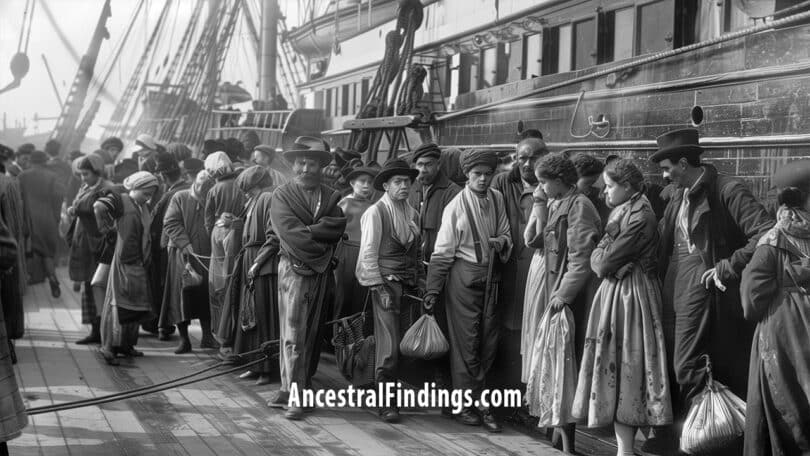Request a Free Lookup
This immigration index covers early arrivals to the American colonies from the 1600s through the early 1800s. These include:
- New World Immigrants (Volumes 1 and 2)
- Emigrants to Pennsylvania, 1641–1819
- Immigrants to the Middle Colonies
- Passengers to America
Each book features carefully compiled articles from leading genealogical periodicals, many of which are referenced in Harold Lancour’s well-known Bibliography of Ship Passenger Lists, 1538–1825.
Researching Immigrants to the New World
If you’re trying to trace an ancestor who came to America before the 1800s, you may find the search challenging. Records from the 1600s and 1700s are often limited, scattered, or difficult to access. Still, there are ways to uncover the stories of early immigrants with some time and creative thinking.
Start with What You Know
Begin by gathering the facts you already have. Do you know a name, a place, or an estimated time of arrival? Even small clues can help narrow your search. For example, if your ancestor was living in Virginia by 1720, you can focus on records from that colony during that time.
Explore Passenger Lists
Passenger lists from the colonial era are rare but not impossible to find. Ships sometimes kept records, and colonial governments or churches may have done the same. These records often appear in published genealogical books or journals. Some are available online through archives or library collections.
You can also request Free Passenger & Immigration Record Lookups through Ancestral Findings. If you want to dig deeper into what passenger lists reveal, A Closer Look at Passenger Lists offers helpful context and tips.
Don’t Overlook Church Records
Churches were often the main record keepers in early America. Ministers recorded baptisms, marriages, and burials. Sometimes, they noted where a person came from, or even the name of the ship they arrived on. If your ancestors belonged to a specific religious group, check that denomination’s historical archives.
Check Land and Property Records
Early immigrants who bought or were granted land may appear in land deeds or petitions. These records sometimes mention places of origin, relatives, or migration routes. Some original petitions even contain personal details written in the immigrant’s own hand.
Look Into Wills and Probate Files
Wills are rich with family history. They may name children, siblings, or even old friends from the country of origin. Sometimes, towns or regions in Europe are mentioned. Don’t forget to look at the witnesses—many were family members or neighbors from the same community.
A valuable resource for this type of material is the Compendium of American Genealogy, 1600s–1800s, which encompasses a diverse range of early colonial records, land files, and family histories.
Use Court Records to Fill in Gaps
Even minor court cases can reveal family details. People appeared in court for things like debts, land disputes, or guardianship. These records may include names, addresses, and hints about family relationships or origin.
Search Published Family Histories
Many family histories were compiled in the 1800s and early 1900s. Some are accurate, others less so—but they often contain leads. Look at sources, notes, and any mention of immigration details. Use them as a starting point, then seek out the original records when possible.
Patience Pays Off
Early immigration research can take time. The records may not be clear at first, and you might need to check several sources before finding a match. But if you stay persistent, you’ll uncover more than names and dates—you’ll discover how your family helped shape the earliest chapters of America’s story.
If you’re not sure where to begin with arrival records, this guide—How to Find Your Ancestor’s Entry into America—offers simple steps to start your search.


